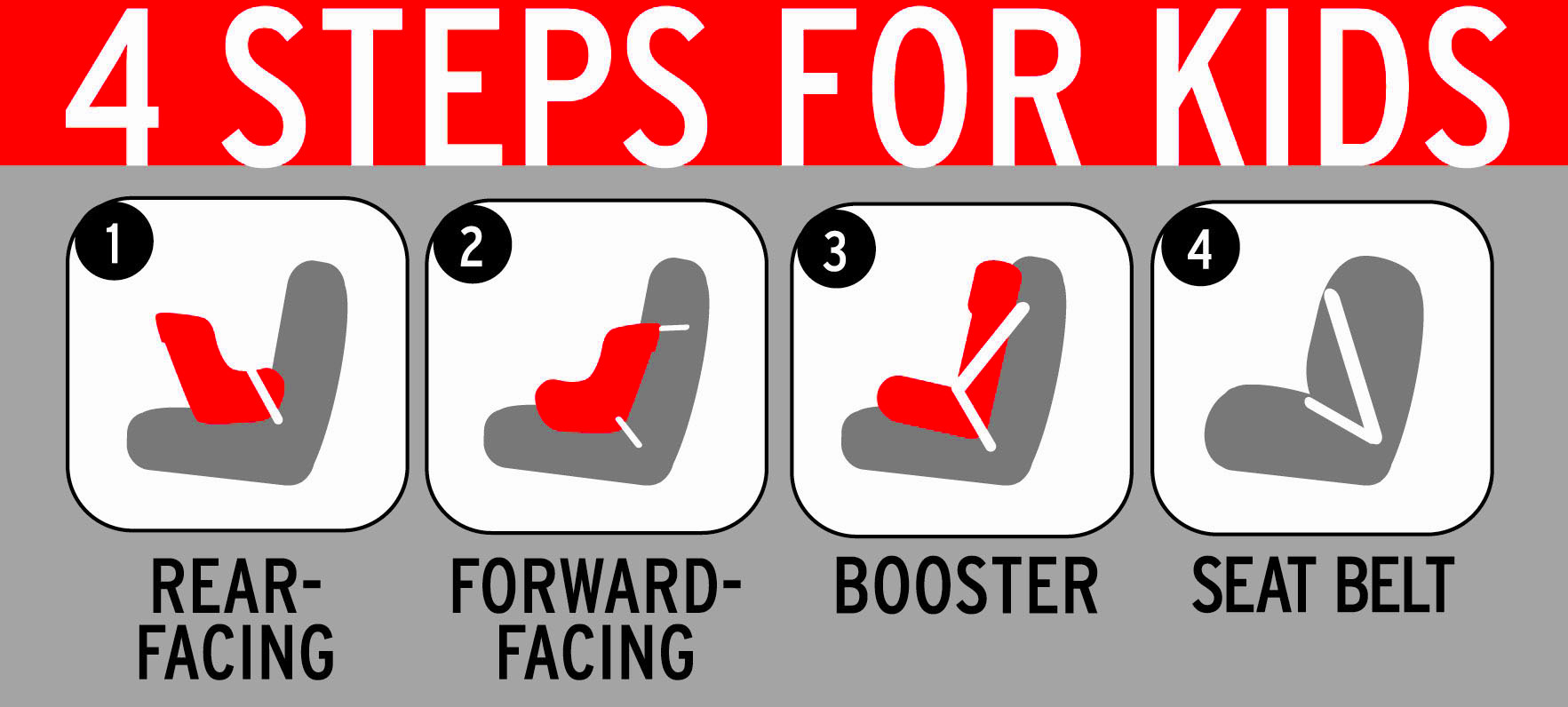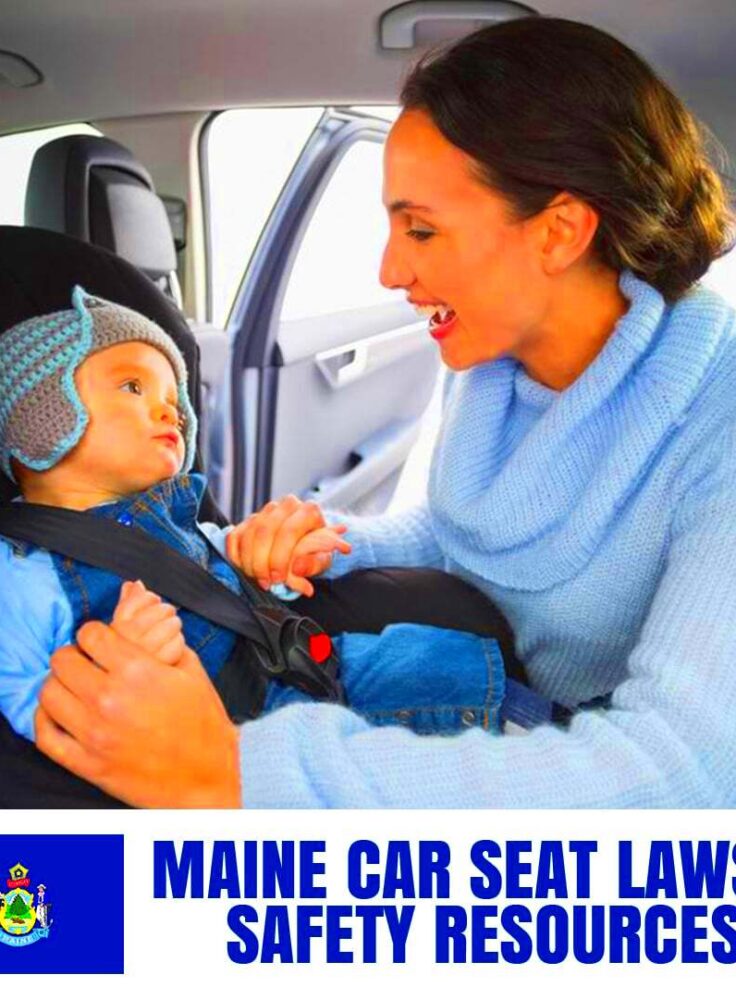Maine Car Seat Laws and Ensuring Your Child’s Safety
Maine takes child safety seriously, and that includes ensuring kids are safely secured in vehicles. Understanding the car seat laws in Maine is essential for every parent and caregiver. These laws are designed to keep children safe while traveling, and knowing them can help prevent injuries in the event of an accident. In this post, we’ll dive into the specific requirements for car seats, the types of seats needed, and how to ensure that your child is safe on the road.
Types of Car Seats Required in Maine

In Maine, there are three main types of car seats that parents need to consider:
- Infant Car Seats: These are designed for newborns and young infants, typically rear-facing.
- Convertible Car Seats: These can be used in both rear-facing and forward-facing positions as your child grows.
- Booster Seats: Used for older children who have outgrown their car seats, these help position the seat belt correctly.
Each type of car seat is designed to meet the specific safety needs of children at various ages and sizes. It’s crucial to select the right type based on your child’s development stage to maximize safety.
Age and Weight Requirements for Car Seats
Maine’s car seat laws include specific age and weight requirements that parents must follow:
| Age Group | Type of Seat | Weight Requirement |
|---|---|---|
| Birth to 2 years | Rear-facing car seat | Up to 35 pounds |
| 2 to 5 years | Forward-facing car seat | At least 40 pounds |
| 5 to 8 years | Booster seat | At least 80 pounds or until the seat belt fits correctly |
| 8 years and older | Seat belt | Must fit properly without a booster seat |
Remember, these requirements are not just guidelines; they are essential for your child’s safety. Always check your car seat’s manual and the manufacturer’s guidelines to ensure you’re complying with Maine’s laws.
Proper Installation of Car Seats
Installing a car seat correctly is crucial for keeping your child safe. It may seem straightforward, but many parents make mistakes that can compromise safety. First, always read both your car seat manual and your vehicle’s manual. Each car seat can have unique installation instructions based on its design. Here are some essential tips for proper installation:
- Choose the Right Location: The back seat is the safest place for children. If possible, place the car seat in the middle seat, as it is often the safest spot.
- Use the Right Belt System: Depending on the car seat, you might use the vehicle’s seat belt or the LATCH system (Lower Anchors and Tethers for Children). Ensure you follow the instructions for the correct system.
- Tighten the Seat: The car seat should not move more than an inch side to side or front to back once installed. Use your body weight to push down on the seat as you tighten the straps.
- Check the Angle: For rear-facing seats, ensure the seat is at the correct angle to prevent your child’s head from flopping forward.
After installation, always double-check that everything is secure. Consider seeking help from a certified car seat technician if you’re unsure. They can guide you and ensure your car seat is installed safely.
Common Mistakes Parents Make with Car Seats
Even the most well-meaning parents can make mistakes when it comes to car seats. Recognizing these common errors can help you avoid them:
- Incorrect Harnessing: The harness straps should be snug and lie flat against your child’s chest. Make sure the clip is at armpit level.
- Too Much Recline: For rear-facing seats, excessive recline can lead to airway issues. Make sure you follow the guidelines for the correct angle.
- Using an Expired Car Seat: Car seats have expiration dates. Using an expired seat can compromise safety, so check your seat’s date regularly.
- Forward-Facing Too Soon: Switching your child to a forward-facing seat before they meet the weight and age requirements can increase the risk of injury in an accident.
- Not Adjusting for Growth: As your child grows, ensure the car seat is adjusted accordingly. Regularly check that the harness fits correctly as they gain weight and height.
Being aware of these mistakes and taking steps to correct them can significantly improve your child’s safety in the car.
Checking for Recalls on Car Seats
It’s essential to stay informed about car seat recalls. A recall can happen for various reasons, from faulty manufacturing to safety concerns. Here’s how you can check for recalls:
- Visit the NHTSA Website: The National Highway Traffic Safety Administration (NHTSA) maintains an updated list of car seat recalls. You can search by brand and model to see if your car seat is affected.
- Register Your Car Seat: When you buy a car seat, register it with the manufacturer. This way, you’ll receive notifications directly if there’s a recall.
- Keep an Eye on News Sources: Major news outlets often report on significant recalls. Staying informed through reliable news sources can help you stay updated.
- Check Manufacturer Websites: Most manufacturers will have a recall section on their website where you can verify if your seat is safe.
Regularly checking for recalls is an important part of car seat safety. If you find that your car seat has been recalled, follow the manufacturer’s instructions for returning or replacing the seat promptly. Your child’s safety is worth it!
Resources for Car Seat Safety in Maine
Ensuring your child’s safety in a car involves more than just following the laws; it also means having access to the right resources. Maine offers several valuable resources to help parents understand car seat safety and usage. Here are some great places to find information and assistance:
- Maine’s Bureau of Highway Safety: This state agency provides information on car seat laws, safety tips, and educational materials for parents.
- Local Health Departments: Many health departments in Maine offer car seat clinics where parents can receive guidance on proper installation and usage.
- Safe Kids Maine: This organization focuses on preventing childhood injuries and offers car seat checks, educational programs, and community events.
- Car Seat Manufacturers: Check the manufacturer’s website for specific information about your car seat model, including installation tips and safety guidelines.
- Certified Technicians: Many local hospitals and fire departments have certified child passenger safety technicians who can help you with car seat installation.
Taking advantage of these resources can help ensure that your car seat is installed correctly and that your child is as safe as possible on the road.
Frequently Asked Questions
Many parents have questions about car seat safety and regulations. Here are some of the most frequently asked questions:
- What is the safest type of car seat for my child? The safest car seat varies by age and size. Infant seats are best for newborns, while convertible seats work as they grow.
- How long should my child remain in a rear-facing seat? Children should stay in a rear-facing seat until they reach the maximum weight or height limit specified by the car seat manufacturer, usually around 2 years old.
- Can I use a second-hand car seat? It’s risky to use a second-hand car seat without knowing its history. Ensure it’s not expired, has never been in an accident, and comes with the original instructions.
- How can I tell if my car seat is installed correctly? A properly installed car seat should not move more than an inch side to side or front to back at the belt path. Use a certified technician for a check if unsure.
If you have other questions, don’t hesitate to reach out to local experts or resources for more information.
Conclusion on Maine Car Seat Laws and Safety
Keeping your child safe in the car is a priority for every parent, and understanding Maine’s car seat laws is a crucial part of that responsibility. By selecting the appropriate car seat for your child’s age and size, ensuring it is installed correctly, and being aware of common mistakes, you can significantly reduce the risk of injury in an accident. Remember to regularly check for recalls and utilize available resources to stay informed.
In conclusion, safety isn’t just about following laws; it’s about making informed choices that protect your child. Stay educated, stay safe, and drive with confidence knowing you’re doing everything possible to keep your little one secure.


